Back to basics with this introductory scenario, which we completed in
a little over three weeks. This time things went very differently…
The missile boats started together, out to the north; the
Canadians were in their standard start position, and asked for various
movement and detection circles. Everyone had radars off, the first
time I've seen this happen in this scenario.

The Canadians also asked for markers showing plausible positions of
the missile boats, and with my latest software upgrades I was able to
supply them. I inserted one datum per ten degrees, moving inwards
towards the start position at forty knots; the helicopter followed a
spiral course sweeping from datum to datum.

The helicopter picked up one of the boats by visual spotting, shortly
followed by the other.
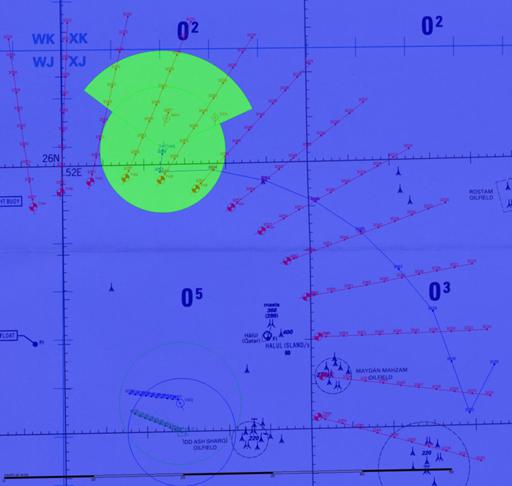
It was able to take up a zig-zag course, tracking one boat by its wake
(usually both as they were close enough together) while remaining
unobserved.
Meanwhile, the tanker and frigate were heading away from the goal,
planning to take cover among the oil platforms.
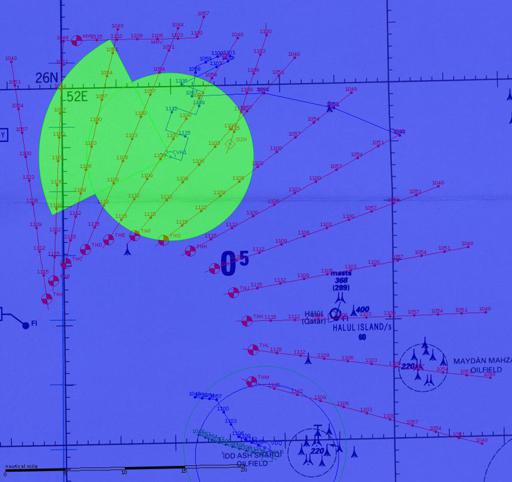
The missile boats split up slightly, meaning the western one had
broken contact, then assumed parallel courses.

The helo continued to keep pace with the boat, flying at minimum
speed. The boats moved off to the south, and the tanker and frigate
started to break north, planning to make a run round the back of the
missile boats.
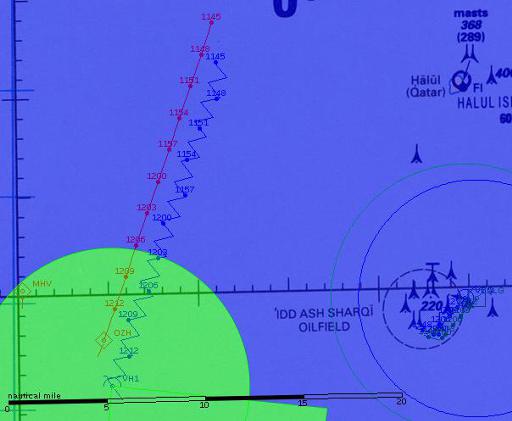
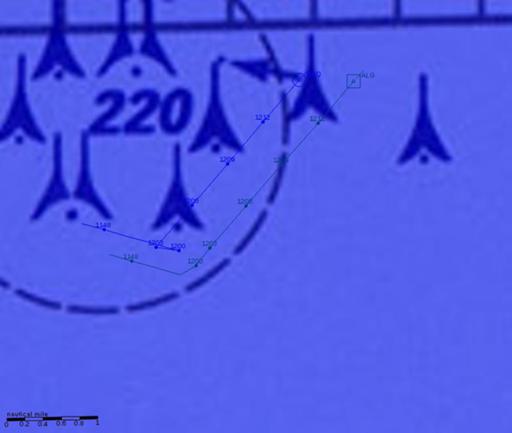
The missile boats carried on to the south, while the tanker and
frigate made a break for the open water.
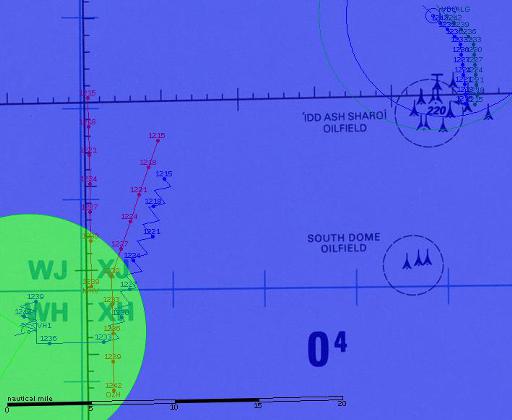
This carried on for more than an hour, with various course changes and
the helo continuing to track the missile boats without being seen. The
missile boats lit off their surface search radars from time to time,
but were out of range to spot anything.
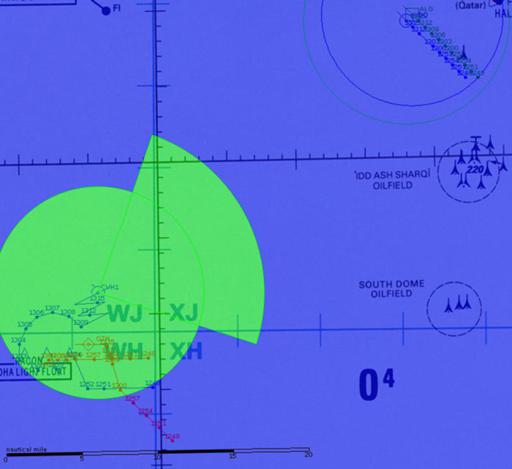
Finally, more than four hours after scenario start, one of the missile
boats picked up tanker and frigate right on the edge of its radar range.

For the next hour, the boats moved east, then turned north for the
attack, still tracked by the helicopter.

The helicopter increased speed while pacing both boats.
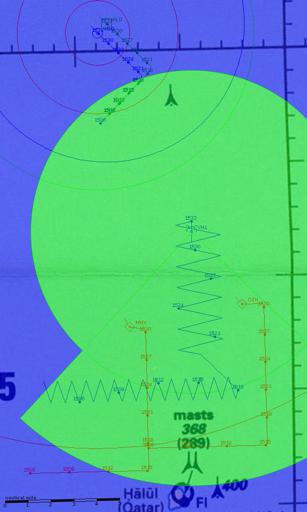
With the hope of distracting the attackers, the helo moved out to the
east and fired a distress flare from just inside one boat's visual
range, but they weren't distracted and carried on. The helicopter
finally hit bingo fuel, and returned to the frigate.

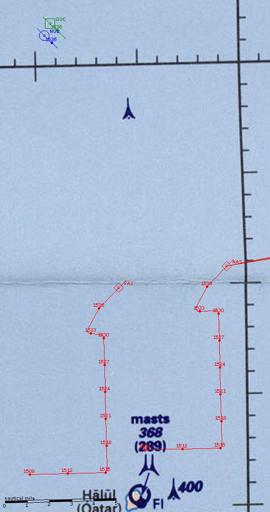
The Iranians launched their missiles, then turned, one boat coming in
for a gun pass while the other backed off. The Canadians were tracking
with ESM, then when the attackers' radars were shut down they shifted
to passive sonar.
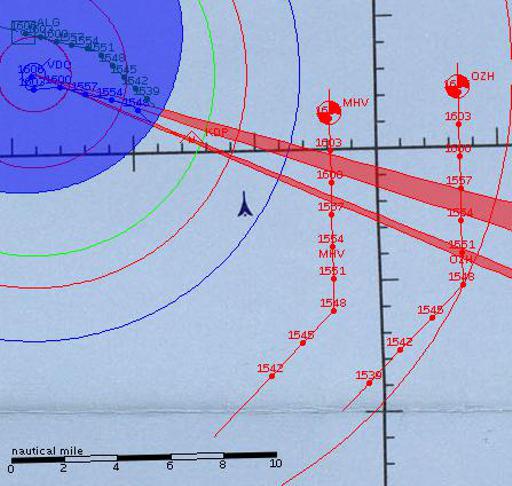
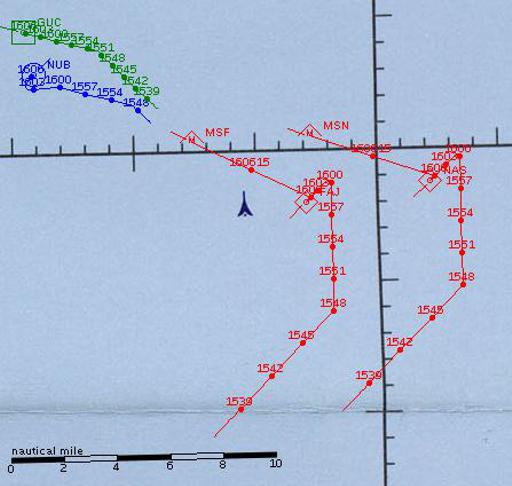
The Canadians whittled down the missiles with Sea Sparrow, Bofors and
Phalanx fire, but in the end two got through to the tanker. Their
return Harpoon fire, conducted more or less blindly, was still able to
sink the two missile boats.
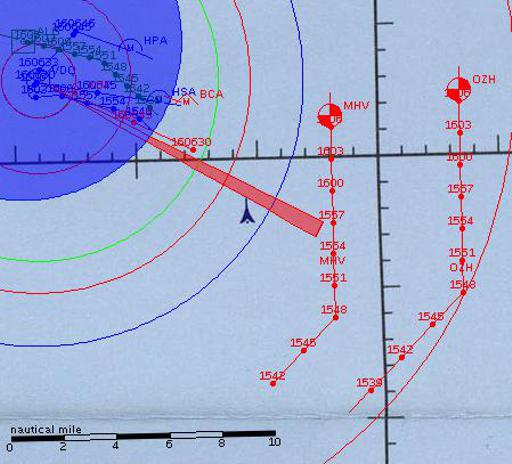
The tanker was damaged and slowed to four knots, but not badly enough
hurt to count as a victory for the Iranians, so nobody won this one.
Thanks to Rory and Marco for playing. The moment-by-moment maps as
shown to each player are
available here.
Things I've learned from this game:
-
Having some relatively simple tools, like the ability to plot moving
datum markers, allows the players to conduct rather more
sophisticated navigation than the simple "turn to course X, go Y
miles" approach.
-
The course deviation for a slow advance is arccos(advance/flight).
So if your helicopter's going at 112 knot and the target's moving at
34, you need to zigzag 72 degrees from the line of advance in order
to keep pace with him. If the helicopter's down at 65 knots, the
deviation is only 58 degrees.
-
The sea is a big place, and hunting visually leaves you unlikely to
find anything. Unless you work out where to look.
-
The speed-limiting thing about these games is waiting for a
response. Blue wanted to do much more micromanagement than Red,
which isn't necessarily a bad thing, but it did mean that most of
the time I was processing orders for Blue. I could encode half an
hour's moves for Red into a single string of commands and just let
them happen, stopping when a contact was made.
-
More players always welcome!
Comments on this post are now closed. If you have particular grounds for adding a late comment, comment on a more recent post quoting the URL of this one.